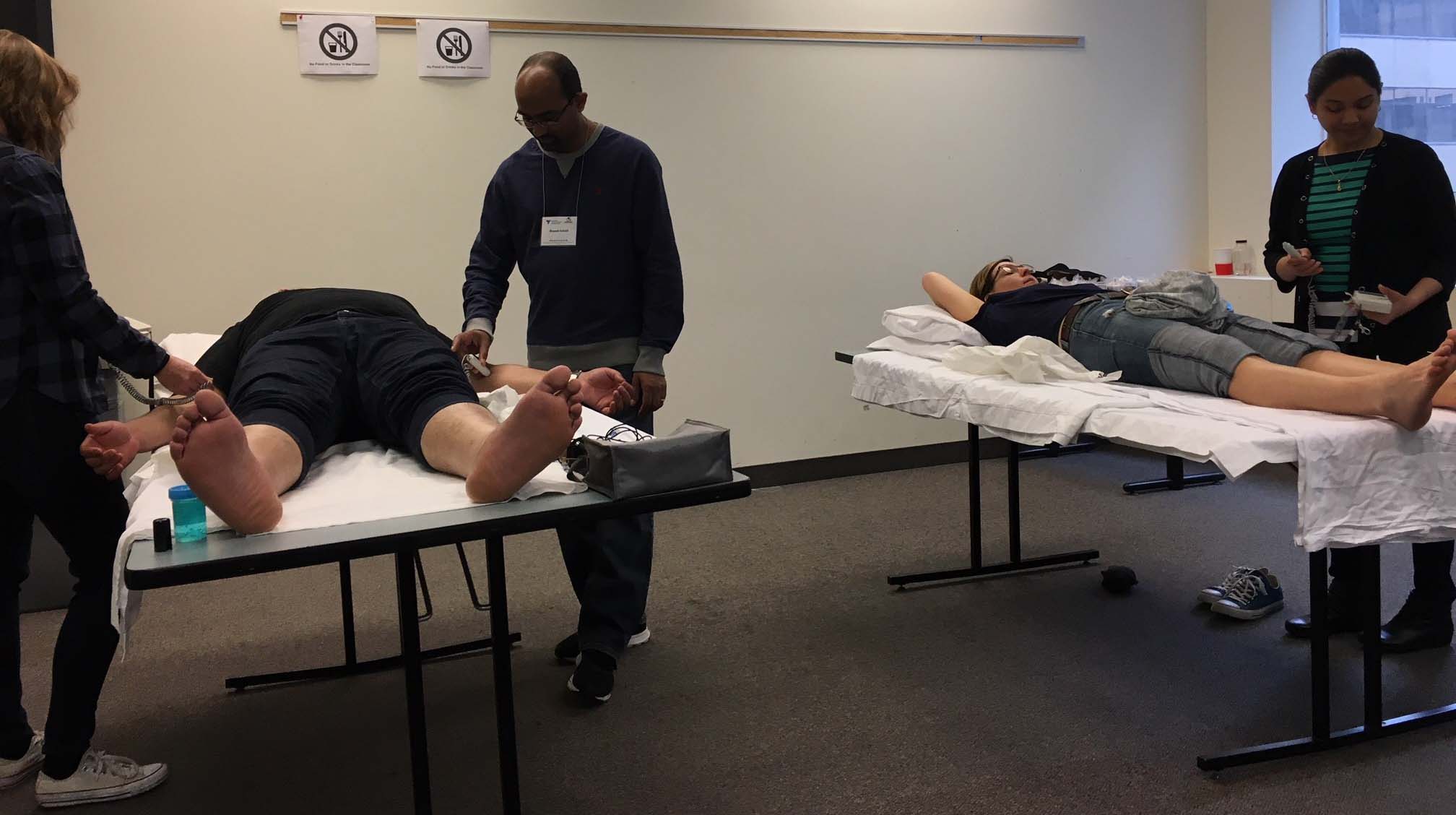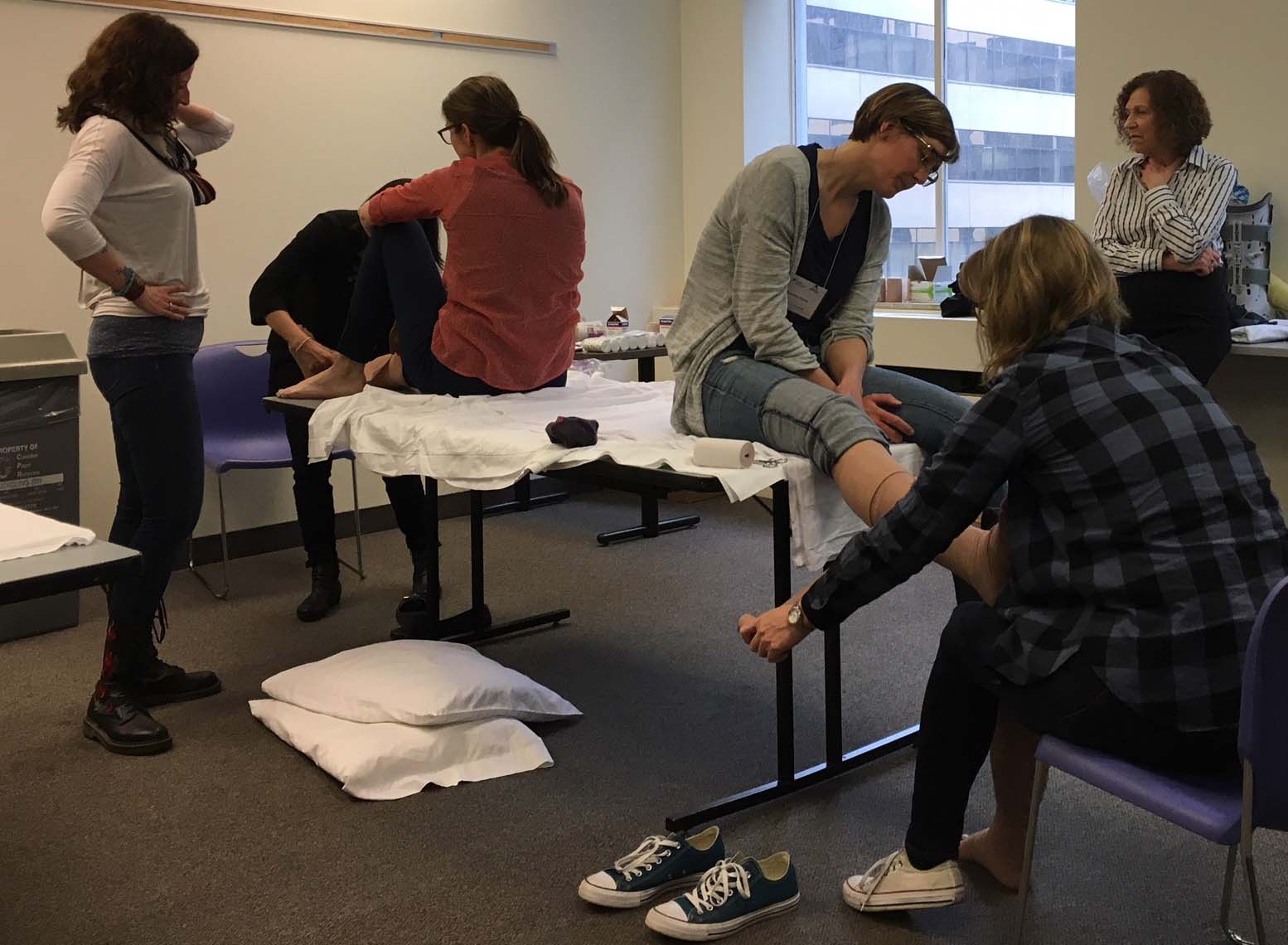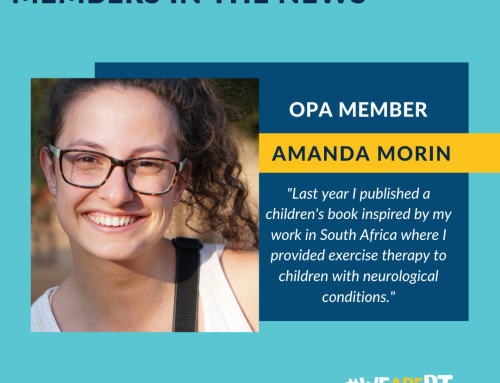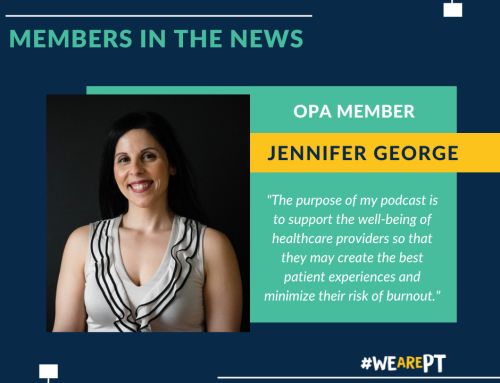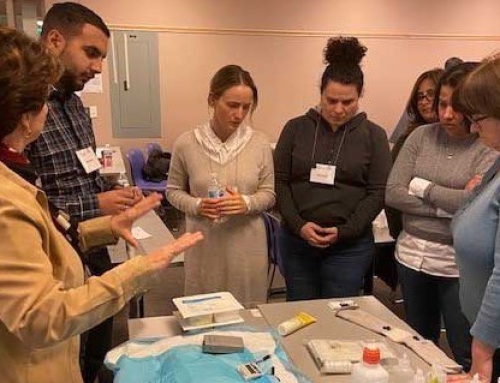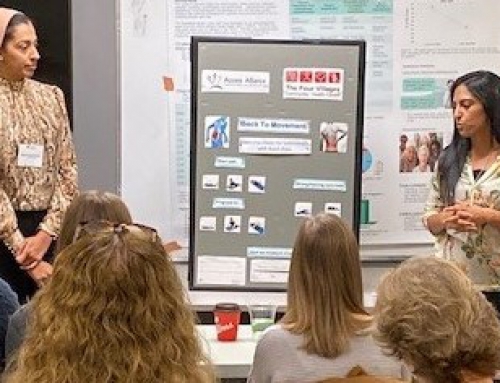On April 28, 2018, I attended the Wound Care Level 3B workshop in Toronto led by Lindsay Orr, PT and Deidre Drombolis-O’Sullivan, PT, hosted by the OPA and the Canadian Physical Therapy Wound Care Collaborative. This was a one day skills-based workshop that brought together the information from two webinars on chronic edema management and pressure redistribution/offloading that were completed prior to the workshop. By completing the online portion ahead of time, we were able to spend the entire day in hands-on skills practice, discussion and case problem-solving.
The topics for Level 3B expand on the topics from Level 1 and 2. Areas covered included etiology and treatment of chronic edema, with use of appropriate screening and assessment tools. Hands-on practice focused on application of compression, such as Coban wrap, with prescription of calf muscle pump exercises and gait assessment, performing and interpreting Ankle Brachial Pressure index (ABPI), and choosing appropriate offloading devices for foot ulceration. In a small group setting, it was a great way to be able to take the time to practice the skills, ask lots of questions, and try out different offloading devices to understand how gait is affected from the client’s perspective.
I chose to take this course and workshop for a few reasons. I work regularly with people who have wounds or are at high risk for developing wounds. One of my areas of work is in a multidisciplinary wound care program, and adding these tools to my toolbox are certainly helpful and will be utilized regularly with this population. Having more knowledge around devices for offloading and being able to select appropriate devices depending on the placement of the wound with consideration of client preferences, abilities, and mobility is very applicable. As we learned that day, the best offloading device is the one the client will wear!
My other area of work is with amputees. I found this course particularly applicable to this area, as many of my clients have multiple co-morbidites, including arterial and venous insufficiencies, and wounds to the sound foot. Not only do I have more options for offloading the sound foot following this course, but now have more tools to follow up after a lower extremity screen. My goal will be to assess ABPI’s for those clients that demonstrate arterial insufficiencies (such as cold, hairless legs, dependent rubor, calf pain from claudication). I will be able to provide more information to the team, including the physician, and hopefully allow for more efficient referrals if indicated (e.g. to vascular or family physician, etc). For those with venous insufficiency and chronic edema, my goal will be to educate on the importance of the calf muscle pump, especially when combined with compression, and provide exercises that help to promote reduction of edema.
I would absolutely recommend this course for any physiotherapist that works with clients who have wounds or are at risk for wounds. The material was relevant to many practice settings, not just for use in a wound care specific program. The accessible format, in terms of completing the webinars in my own time before the workshop and then spending a whole day in practice, discussion and case-study, made it easy to fit this extra learning into a busy work schedule!
By Susanna Puiras, PT
OPA offers in collaboration with the Canadian Physical Therapy Wound Care Collaborative four wound care courses:
Wound Care Management Level 1 – E-learning module
Wound Care Principles and Assessment Level 2 – In-person workshop – date to be determined
Wound Care Management Level 3A – E-learning and in-person
Wound Care Management Level 3B – E-learning and in-person


